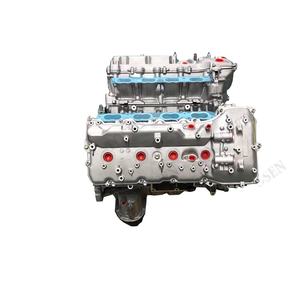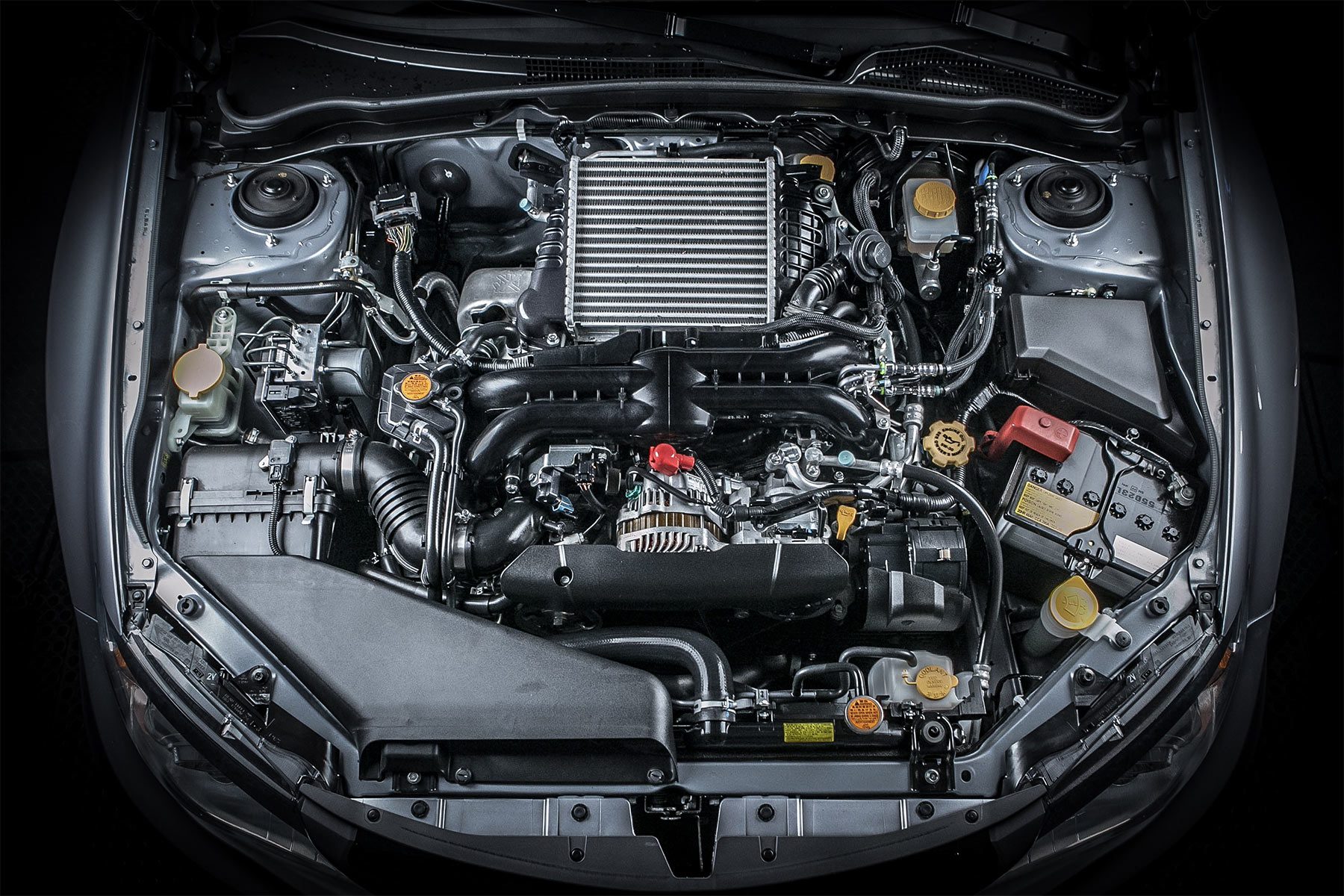Import Engines: Everything You Need to Know Prior To Purchasing
Import Engines: Everything You Need to Know Prior To Purchasing
Blog Article
Discovering the Newest Technical Developments in Import Engines and Just How They Boost Driving Experience
In the world of automotive engineering, the landscape of import engines is undergoing a profound change driven by cutting-edge technical technologies. From the advancement of turbocharged engines to the assimilation of crossbreed technology, the most up to date advancements are transforming the driving experience in methods previously unimaginable. As import producers push the boundaries of efficiency and performance via boosted gas shot systems and advanced engine administration services, the question occurs: How do these advancements truly influence the means we engage with our cars when driving?

Evolution of Turbocharged Engines
In the vehicle industry, the advancement of turbocharged engines has significantly changed the landscape of efficiency and effectiveness. Turbocharging, when mainly seen in high-performance sports vehicles, has now become a mainstream technology adopted by a large range of cars, from portable hatchbacks to deluxe cars. The essential principle behind a turbocharged engine is simple yet reliable - by compeling more air into the combustion chamber, it enables even more gas to be shed, resulting in increased power result.
One of the vital benefits of turbocharged engines is their ability to supply more power from smaller sized, a lot more fuel-efficient engines. This downsizing pattern has brought about a reduction in emissions without endangering performance, making turbocharging an attractive choice for automakers aiming to meet rigid environmental guidelines. Turbocharged engines use enhanced torque at reduced RPMs, providing motorists with a more dynamic and responsive driving experience.
As modern technology continues to development, we can anticipate further advancements in turbocharging, leading to even higher degrees of performance and effectiveness in the auto industry.
Developments in Gas Shot Systems
With the constant progression of auto technology, considerable innovations have actually been made in fuel injection systems. Modern fuel injection systems have actually advanced to supply fuel more effectively and exactly right into the engine cyndrical tubes, boosting overall engine performance and fuel efficiency. One of the essential technologies in gas shot systems is the change from traditional port fuel injection (PFI) to advanced direct fuel injection (DFI) technology. DFI systems inject fuel directly right into the combustion chamber at high pressures, leading to much better gas atomization and burning, causing improved power outcome and minimized discharges.
Additionally, the integration of digital control devices (ECUs) and sensors in fuel shot systems has actually allowed for real-time adjustments to sustain shipment based upon numerous aspects such as engine tons, temperature level, and driving problems. This level of precision makes certain ideal fuel-air mixture proportions, taking full advantage of engine effectiveness while decreasing gas consumption and exhausts. Furthermore, developments in gas injector style, products, and spray patterns have added to cleaner burning and smoother engine operation. In verdict, the continuous technologies in gas injection systems play a vital function in boosting driving experience by supplying improved efficiency, fuel economic situation, why not look here and ecological friendliness.
Integration of Crossbreed Technology
The advancement of gas shot systems in the direction of better performance and performance has actually set the stage for the smooth combination of crossbreed modern technology right into modern engines. Crossbreed technology integrates making use of typical internal combustion engines with electric propulsion systems, using boosted fuel efficiency and decreased discharges. By incorporating electrical motors and batteries right into the powertrain, crossbreed engines can supplement the internal combustion engine during acceleration or low-speed driving, consequently boosting total performance.

Improved Engine Management Equipment
What are the key innovations in engine monitoring systems that are improving the performance and performance of modern-day engines? Engine administration systems check my source have undertaken considerable developments to optimize engine efficiency and effectiveness.
Additionally, modern engine administration systems use sophisticated formulas and fabricated intelligence to evaluate the data accumulated by sensors and make vibrant modifications to elements such as ignition timing, gas injection, and turbocharger increase pressure. This level of accuracy and versatility lead to enhanced engine responsiveness, enhanced power result, and minimized fuel usage.
Additionally, engine monitoring systems now include sophisticated analysis abilities that can find and deal with issues such as misfires, sensing unit breakdowns, and fuel system abnormalities in real-time, thus enhancing general engine dependability and longevity. These innovations in engine administration systems play a crucial duty in boosting the driving experience by delivering ideal efficiency, fuel effectiveness, and integrity.
Impact of Lightweight Materials
Including light-weight materials in engine manufacturing has changed the automobile market's strategy to enhancing fuel effectiveness and efficiency. Making use of materials such as carbon light weight aluminum, fiber, and titanium has substantially lowered the overall weight of engines, resulting in enhanced power-to-weight proportions and raised gas economy. These lightweight materials provide a higher strength-to-weight ratio contrasted to standard products like steel, enabling better resilience without compromising performance.
One of the crucial benefits of utilizing light-weight materials in engine building and construction is the decrease of inertia, causing quicker engine feedback times and enhanced general automobile dexterity. Furthermore, the lighter weight adds to reduce energy usage, making automobiles a lot more eco-friendly by minimizing discharges.
Moreover, the application of lightweight products in engine elements such as pistons, linking rods, and crankshafts has actually made it possible for designers to push the boundaries of efficiency without giving up integrity (import engines). This advancement has led the way for more powerful and reliable engines that deliver a superior driving experience while fulfilling strict emissions criteria
Final Thought
To conclude, the most recent technical technologies in import engines have actually considerably improved the driving experience. From the advancement of turbocharged engines to improvements in fuel shot systems, integration of crossbreed innovation, enhanced engine administration systems, and using light-weight materials, these technologies have collectively enhanced performance, gas effectiveness, and overall driving characteristics. this contact form As technology proceeds to advance, we can anticipate much more exciting growths in the future of import engines.
Modern fuel shot systems have actually advanced to provide gas more effectively and precisely into the engine cyndrical tubes, improving general engine efficiency and fuel effectiveness - import engines. By incorporating electric motors and batteries into the powertrain, crossbreed engines can supplement the internal combustion engine during acceleration or low-speed driving, therefore boosting overall efficiency
What are the vital developments in engine administration systems that are boosting the performance and effectiveness of contemporary engines? Engine monitoring systems have gone through substantial improvements to enhance engine performance and effectiveness. From the development of turbocharged engines to innovations in fuel injection systems, combination of hybrid modern technology, boosted engine management systems, and the usage of lightweight products, these advancements have collectively improved efficiency, fuel effectiveness, and overall driving characteristics.
Report this page